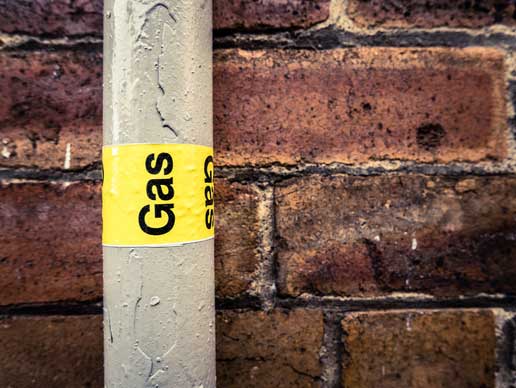While millions of homes have gas lines, seldom does anyone give them a lot of thought. Residential gas lines are used to operate clothes dryers, hot water heaters, stoves/ovens, furnaces, gas fireplaces, and more. The biggest challenge is that gas leaks often go unnoticed. For that reason, anyone purchasing a home should have a thorough inspection performed, and current homeowners need to schedule maintenance regularly.
Gas lines become damaged for a variety of reasons, including corrosion, weld failure, and different types of accidents, including those associated with nature. However, the biggest issue is that natural gas lines are aging, and in fact, most are at minimum 50 years old. Sadly, many people have been severely injured and killed because of gas leaks.
Of all gas line failures, up to 20 percent have to do with corrosion. In addition to potential risks associated with major natural gas lines beneath the ground, there are risks within homes. Therefore, it is imperative for homeowners to have a basic understanding of potential risks and the best solutions.
Safety Precautions
Often, simple precautions reduce big risks. Following are some helpful guidelines for homeowners to consider:
- Outdoor Digging – Whether putting in a garden, swimming pool, invisible dog fence, yard lights, sprinkler system, fence poles, or something else, a homeowner or contractor needs to contact the utility company prior to digging. Striking a gas line with a shovel or hoe could cause a deadly explosion or major gas leak. By calling first, a representative will come to the home, check the area, and deem it safe or unsafe for digging.
- Signs of a Leak – Using the senses of the nose, eyes, and ears, a gas line leak can often be detected. Although some gases have no odor, typically there is an unusual smell that resembles rotten eggs. In addition, an individual may notice a slight hissing sound, discolored vegetation, blowing vegetation with no wind present, or standing water that bubbles.
- Tree Planting – Usually, trees cannot be planted within a gas line’s right-of-way primarily because they create challenges for utility companies that provide operation and maintenance. However, there are times when trees can be planted nearby if they are at least 40 inches away from the right-of-way. Before planting, a homeowner needs to contact the utility company.
Emergency Situations
Again, taking precautionary measures is the best way to avoid problems with gas lines. If an issue does arise, it is important to know the appropriate steps to take. For example, if a gas leak is suspected based on smell, sight, and sound, humans and animals should leave the area immediately rather than stay in or around the home to call emergency services.
If there are neighbors nearby, they too should be notified of the leak so they have the opportunity to reach safety. In addition to the gas being dangerous, the use of anything electronic or electric could create a spark that would initiate an explosion. Even cellphones can be dangerous, so it is always best to get out of the area and then call for help.
Rather than leave a message, send an email, or submit a concern on the utility company’s website, a gas leak needs to be reported as an emergency. Therefore, if the utility company cannot be reached for any reason, law enforcement officials and the fire department need to be summoned to the location.
At no time should an individual try to repair a gas leak. This is a very serious situation and one that needs to be handled by a trained professional. Although it might be tempting to turn the gas off, a leak is a literal ticking time bomb that needs to be respected. Beyond a gas leak, there is another potentially dangerous risk.
Gas poisoning, also known as carbon monoxide poisoning, is caused by a gas that is odorless and colorless. As a result, this gas can go undetected, making it extremely serious. Carbon monoxide kills, so again, it is imperative to have gas lines checked by a professional, as well as equipment and appliances that run on gas.
With this type of poisoning, carbon monoxide adheres to red blood cells within the body, preventing them from carrying oxygen to major organs, including the brain and heart. Quickly, the body becomes suffocated of the oxygen needed to live. Knowing the symptoms of carbon monoxide poisoning is critical and has been proven to save lives:
- Headache
- Drowsiness
- Nausea and/or vomiting
- Difficulty breathing
- Seizures and/or convulsions
- Rapid heart rate
- Mental confusion
- Hyperactivity
- Mood changes
If anyone experiences one or more of these symptoms or notices someone else in the home having problems, it is vital to get outdoors to fresh air, followed by calling emergency services. Carbon monoxide poisoning can overtake an individual quickly, so time is of the essence.
